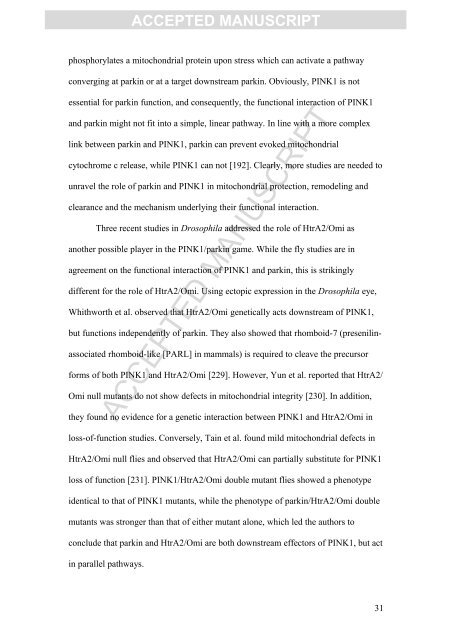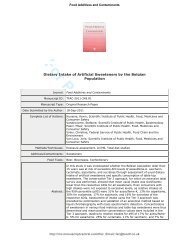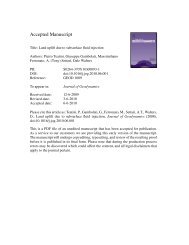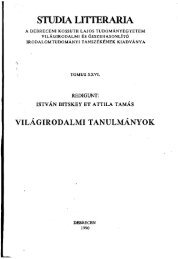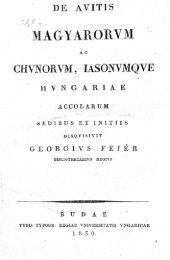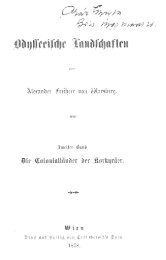accepted manuscript
accepted manuscript
accepted manuscript
You also want an ePaper? Increase the reach of your titles
YUMPU automatically turns print PDFs into web optimized ePapers that Google loves.
ACCEPTED MANUSCRIPT<br />
phosphorylates a mitochondrial protein upon stress which can activate a pathway<br />
converging at parkin or at a target downstream parkin. Obviously, PINK1 is not<br />
essential for parkin function, and consequently, the functional interaction of PINK1<br />
and parkin might not fit into a simple, linear pathway. In line with a more complex<br />
link between parkin and PINK1, parkin can prevent evoked mitochondrial<br />
cytochrome c release, while PINK1 can not [192]. Clearly, more studies are needed to<br />
unravel the role of parkin and PINK1 in mitochondrial protection, remodeling and<br />
clearance and the mechanism underlying their functional interaction.<br />
Three recent studies in Drosophila addressed the role of HtrA2/Omi as<br />
another possible player in the PINK1/parkin game. While the fly studies are in<br />
agreement on the functional interaction of PINK1 and parkin, this is strikingly<br />
different for the role of HtrA2/Omi. Using ectopic expression in the Drosophila eye,<br />
Whithworth et al. observed that HtrA2/Omi genetically acts downstream of PINK1,<br />
but functions independently of parkin. They also showed that rhomboid-7 (presenilin-<br />
associated rhomboid-like [PARL] in mammals) is required to cleave the precursor<br />
forms of both PINK1 and HtrA2/Omi [229]. However, Yun et al. reported that HtrA2/<br />
Omi null mutants do not show defects in mitochondrial integrity [230]. In addition,<br />
ACCEPTED MANUSCRIPT<br />
they found no evidence for a genetic interaction between PINK1 and HtrA2/Omi in<br />
loss-of-function studies. Conversely, Tain et al. found mild mitochondrial defects in<br />
HtrA2/Omi null flies and observed that HtrA2/Omi can partially substitute for PINK1<br />
loss of function [231]. PINK1/HtrA2/Omi double mutant flies showed a phenotype<br />
identical to that of PINK1 mutants, while the phenotype of parkin/HtrA2/Omi double<br />
mutants was stronger than that of either mutant alone, which led the authors to<br />
conclude that parkin and HtrA2/Omi are both downstream effectors of PINK1, but act<br />
in parallel pathways.<br />
31


